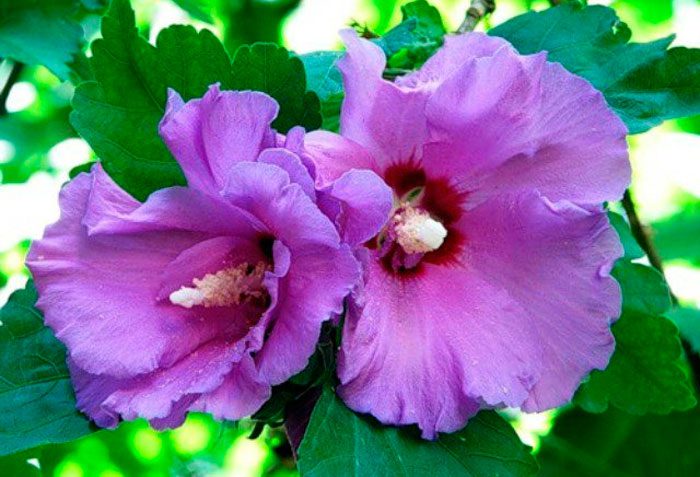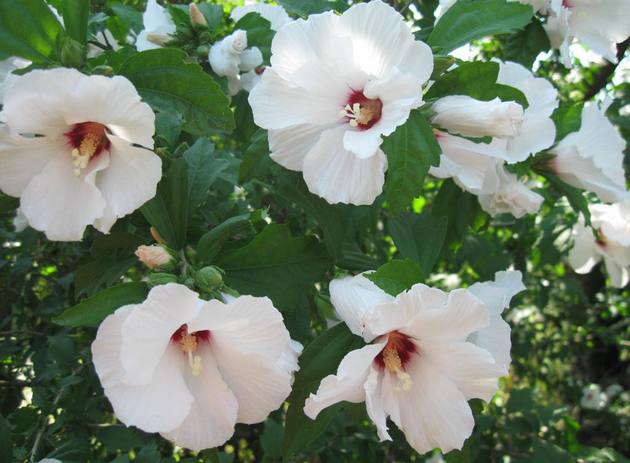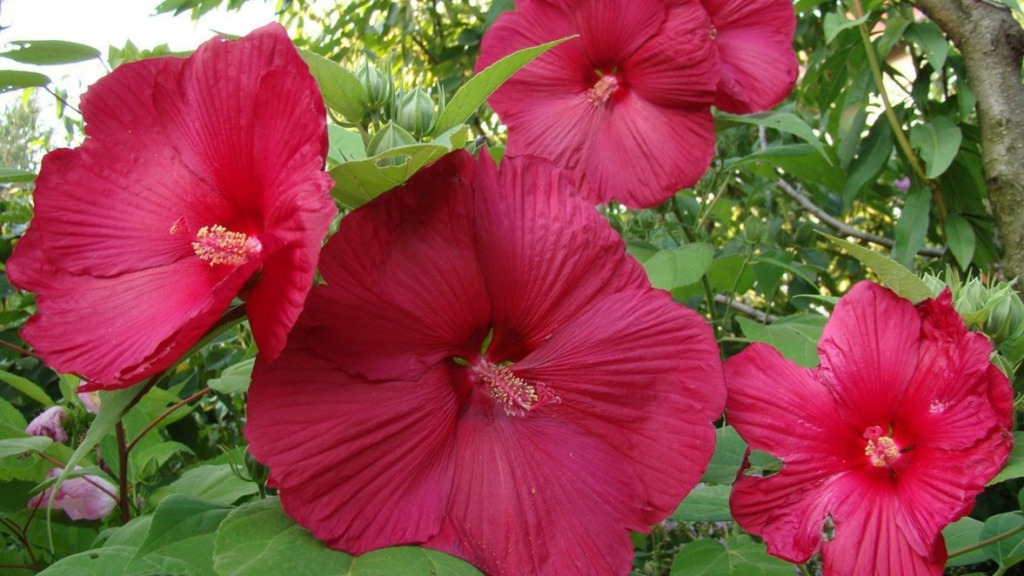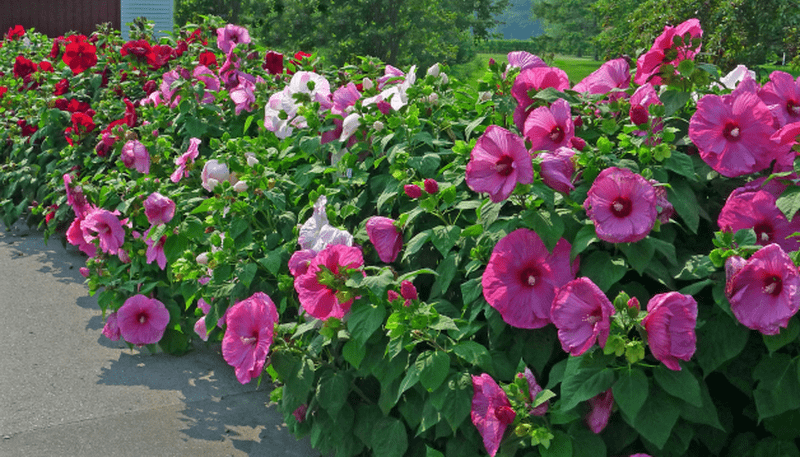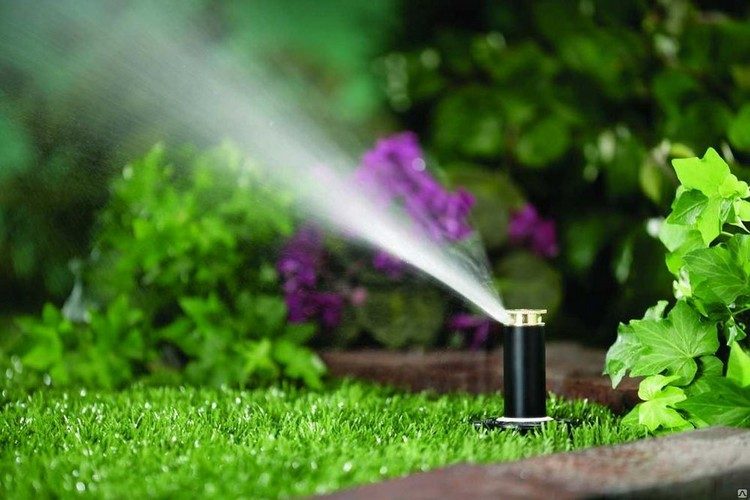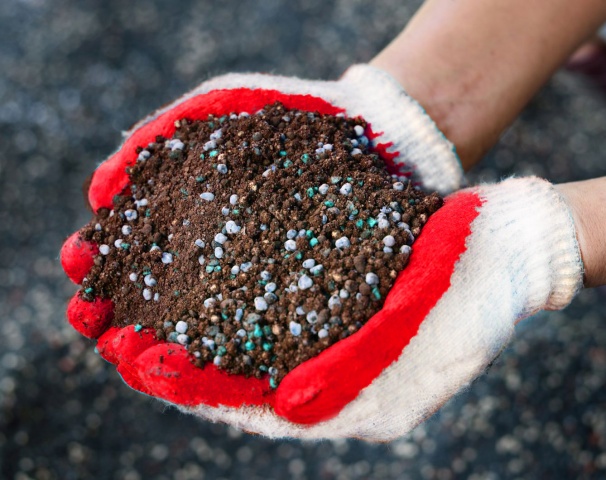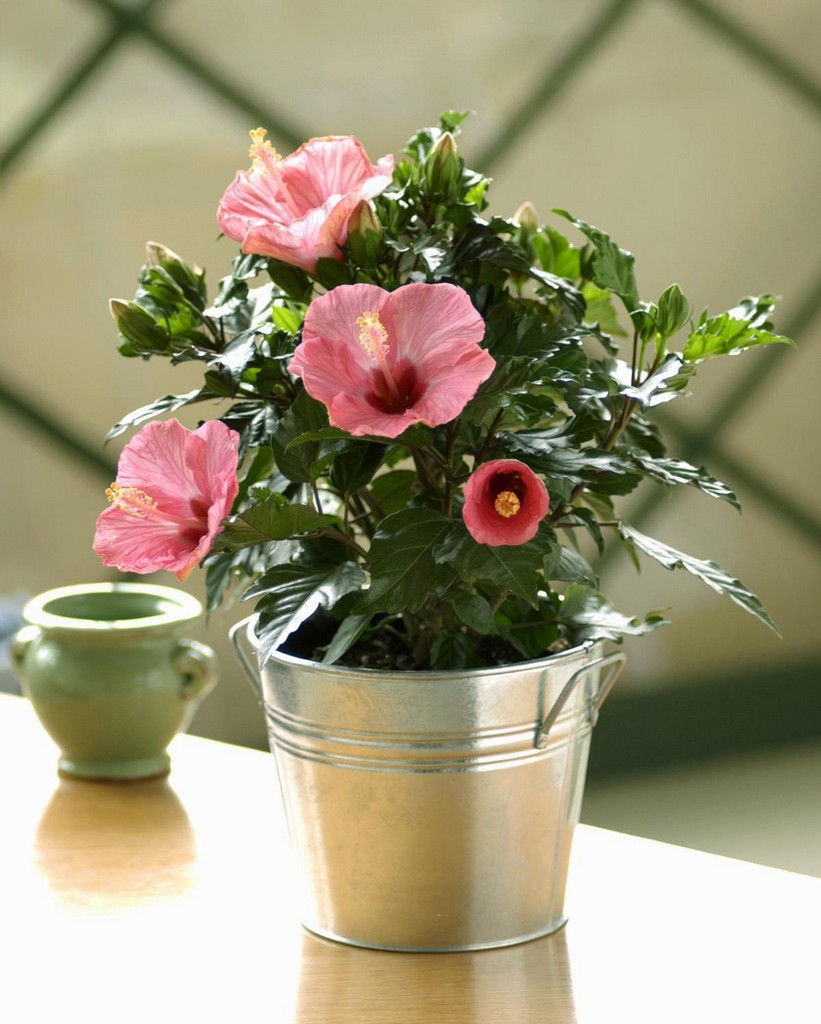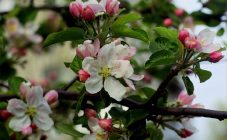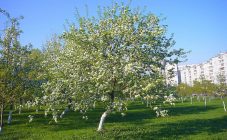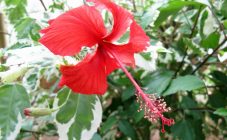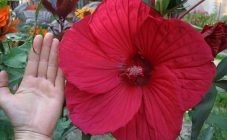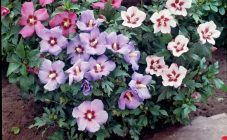Content:
Large double flowers, mostly scarlet in color, against the background of glossy dark emerald leaves are a living decoration. But sometimes it happens that the plant does not bloom. What is the reason?
Briefly about hibiscus: flowering, planting
With good care, the height of a bush can reach 3 m or more. Its branchiness is increased by correct pruning. The life span of a hibiscus is within 15-20 years.
The diameter of huge flowers often approaches 12 cm, but there are varieties with inflorescences more than 16 cm in diameter. The color palette is quite extensive, but shrubs with red, purple and white buds are most often found. After planting the culture, you will have to wait 3-4 years until the first bud appears and the flower opens. And after transplanting the finished seedling, flowering begins a year later.
Common types of hibiscus
There are more than 200 varieties and varieties of hibiscus. All of them are unique and differ in keeping conditions. However, the most common are only a few.
Syrian hibiscus
In many catalogs this species is known as ardens. This is a garden plant that grows up to 6 m. The leaves of the bush are large enough (10 cm), the color is bright green. The size of the buds is slightly smaller than that of the Chinese hibiscus, but the flowers are two-colored, terry flowers are more beautiful.
The plant growing in the garden needs to be pruned annually to ensure good flowering. The procedure is carried out twice: after the buds open and before waking up.
Syrian hibiscus is cared for according to the climate where it is cultivated. It grows very slowly, so you should not expect the buds to appear earlier than the seedling reaches 3 years.
Arboreal hibiscus
This species belongs to frost-resistant, it is quite unpretentious. Tree hibiscus tolerates transplanting well. They use a tree to form a hedge, create a design, decorate terraces. With good care, it blooms abundantly and lasting. In spring and autumn, the foliage of the shrub can turn yellow.
When transplanting hibiscus, a lot of humus is placed in the planting pit. The place for growth is chosen sunny, quiet, without drafts. Watering often, but not allowing water stagnation. In the early years, young bushes are covered for the winter in order to protect them from frost.
Swamp hibiscus
The herbaceous perennial is large in size. Its shoots die off by winter, and during the growth period they stretch by 2.5 m, so pruning is simply necessary for him. Heart-shaped serrated leaves have a weak edge. The color of the buds can be crimson, white, red, pink. Hibiscus loves wetlands, a lot of sun. The flower is planted near streams, ponds, they mask the sewage pits.
The plant is planted in acidic soils, where other types of hibiscus do not take root.
Herbaceous hibiscus
This unique species is obtained from several varieties - bright red, armed, marsh. There are two types: perennial and annual.
Most growers prefer to cultivate perennial varieties because they do not need much care.
This variety has petiolar incised leaves and bright flowers of various colors: pale pink, yellow, crimson, blue, lilac, snow-white. There are also flowers that have two shades at the same time.
The herbaceous type of hibiscus is adapted to grow in any climatic condition. The plant is not demanding for pruning, it does not need additional feeding. The culture is resistant to drought and frost.
Why hibiscus doesn't bloom
When a Chinese rose is in bloom, it expresses gratitude for the care that is taken with sufficient care. But excessive diligence in caring will inevitably cause a reason because of which the plant may stop opening its buds. As a result, the tree will cover only emerald foliage without a single flower.
Any reason can cause imbalance.
Lighting problem
Novice flower growers often make the mistake of changing the location of the flowerpot: they rearrange the houseplant from place to place, turn it to the light in different directions. It is absolutely impossible to do this, since with such care, the hibiscus will never open the buds. The tree should be immobile all summer.
Proper watering
For lush flowering, the plant needs proper watering. If the room temperature is low and the soil has a lot of moisture in the hibiscus, the roots may start to rot. At the first sign of malaise, the bush immediately sheds buds and flowers. If measures are not taken, the leaf begins to turn yellow and fall off, the rose gets sick and dies.
If there is a lack of moisture, the buds also fall off, and if, what needs to be done in order for the hibiscus to bloom, it is to adhere to the following rules:
- do not spare the water during the sultry period, but you need to wait for the topsoil to dry out;
- water for irrigation should settle well;
- stagnation of water in winter is completely unacceptable;
- in hot weather, hibiscus, especially domesticated ones, should be sprayed daily on each leaf. In addition, a container with water is placed next to the plant to increase moisture;
- irrigation water should be warm.
Top dressing of the Chinese rose
The reason why hibiscus does not bloom, but gives only foliage, may be in violation of the feeding regime. The bush is either "hungry" or overfed with fertilizers.
During the period of active growth (March-September), the tree is fertilized weekly, and the rest of the time you need to do this only once a month. It is recommended to use a mineral complex developed for flowering crops.
Soil composition
The culture makes special demands on the soil: neutral acidity, loose soil, the presence of a drainage system. The soil mixture should include humus, clay turf, charcoal chips.
The small tree needs to be repotted frequently, gradually increasing the volume of the pot. An adult plant does not need replanting, but every season it is advisable to carefully remove the top layer of the earth and add a nutritious soil mixture.
If a young hibiscus is immediately planted in a large tub, then you do not need to wonder why the hibiscus does not bloom, since the reason is quite simple. This flower will not bloom until it fills with roots all the earthy clod provided to it. It remains to either wait or transplant into a smaller container.
Temperature regime
The formation of hibiscus color is strongly influenced by the temperature regime. In the open field, you can often see blooming roses, but at home they do not open their buds. The fact is that hibiscus needs hibernation, and in apartments it is warm in winter and the required temperature for rest (13-15 ° C) is absent. It is during sleep that the plant actively lays flower buds.
Pruning
In order for the Chinese rose to have a beautiful crown and abundant color, pruning is carried out even before its awakening. After removing old branches, young shoots will appear very quickly, since double flowers are formed on them. An uncut bush will not bloom. He needs a systematic pruning, and this is an important part of grooming.
In a young bush, shoots are cut off to 2-3 buds, and the trunk is not touched. When it reaches the desired height, pruning is done at level 6 of the bud.
Sanitary pruning is carried out only before the start of sap flow. Remove underdeveloped, sick, old parts. From last year's shoots, 2/3 of the part is left, and the rest is cut off.
Expert advice
It happens that if all the conditions required for flowering are observed, hibiscus still does not bloom. The reason may lie in the malaise of the plant.
- Yellowness on the leaves appears if there is a problem with the roots. The culture must be transplanted, after reviewing the roots, removing damaged and problematic ones.
- If the lower foliage quickly crumbles, the emerging ones have a faded appearance, it means that the plant has suffered from poor water, hypothermia or dry air. For resuscitation, you will need to replace the water for irrigation, review the temperature regime, and refresh the flower by spraying.
- When hibiscus is attacked by pests, you can observe brown spots, twisted leaves, and the presence of fishing net Any insecticide is suitable for the fight.
- Hibiscus can shed unopened buds due to lack of nutrition or moisture.
- The yellowness of the foliage is caused by a lack of iron and nitrogen.
Hibiscus loves comfortable conditions. But, if you do not "strangle" him with care, then, having rest in the winter, trimmed, fed, he will thank him with a chic long flowering.
